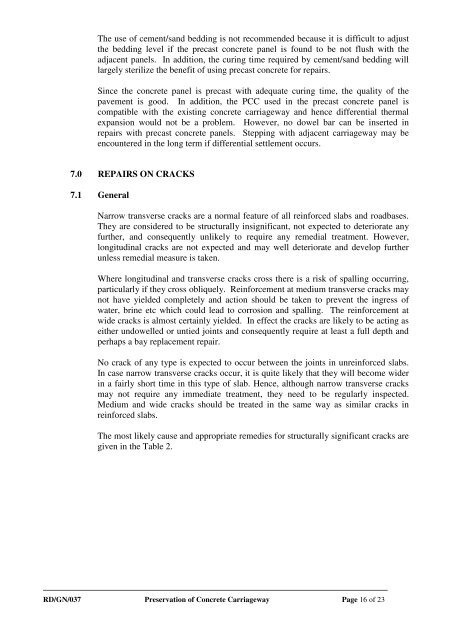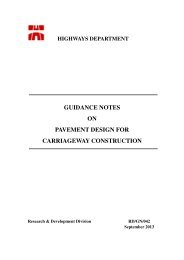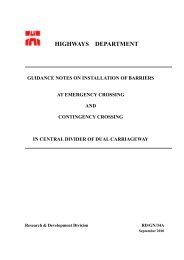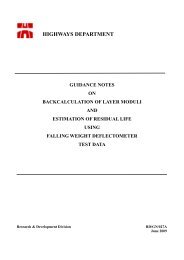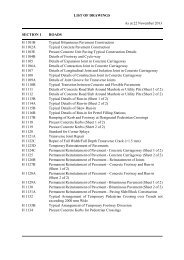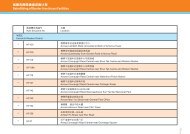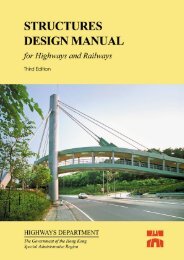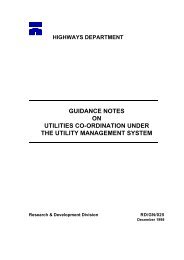Preservation of Concrete Carriageway
Preservation of Concrete Carriageway
Preservation of Concrete Carriageway
Create successful ePaper yourself
Turn your PDF publications into a flip-book with our unique Google optimized e-Paper software.
The use <strong>of</strong> cement/sand bedding is not recommended because it is difficult to adjust<br />
the bedding level if the precast concrete panel is found to be not flush with the<br />
adjacent panels. In addition, the curing time required by cement/sand bedding will<br />
largely sterilize the benefit <strong>of</strong> using precast concrete for repairs.<br />
Since the concrete panel is precast with adequate curing time, the quality <strong>of</strong> the<br />
pavement is good. In addition, the PCC used in the precast concrete panel is<br />
compatible with the existing concrete carriageway and hence differential thermal<br />
expansion would not be a problem. However, no dowel bar can be inserted in<br />
repairs with precast concrete panels. Stepping with adjacent carriageway may be<br />
encountered in the long term if differential settlement occurs.<br />
7.0 REPAIRS ON CRACKS<br />
7.1 General<br />
Narrow transverse cracks are a normal feature <strong>of</strong> all reinforced slabs and roadbases.<br />
They are considered to be structurally insignificant, not expected to deteriorate any<br />
further, and consequently unlikely to require any remedial treatment. However,<br />
longitudinal cracks are not expected and may well deteriorate and develop further<br />
unless remedial measure is taken.<br />
Where longitudinal and transverse cracks cross there is a risk <strong>of</strong> spalling occurring,<br />
particularly if they cross obliquely. Reinforcement at medium transverse cracks may<br />
not have yielded completely and action should be taken to prevent the ingress <strong>of</strong><br />
water, brine etc which could lead to corrosion and spalling. The reinforcement at<br />
wide cracks is almost certainly yielded. In effect the cracks are likely to be acting as<br />
either undowelled or untied joints and consequently require at least a full depth and<br />
perhaps a bay replacement repair.<br />
No crack <strong>of</strong> any type is expected to occur between the joints in unreinforced slabs.<br />
In case narrow transverse cracks occur, it is quite likely that they will become wider<br />
in a fairly short time in this type <strong>of</strong> slab. Hence, although narrow transverse cracks<br />
may not require any immediate treatment, they need to be regularly inspected.<br />
Medium and wide cracks should be treated in the same way as similar cracks in<br />
reinforced slabs.<br />
The most likely cause and appropriate remedies for structurally significant cracks are<br />
given in the Table 2.<br />
RD/GN/037 <strong>Preservation</strong> <strong>of</strong> <strong>Concrete</strong> <strong>Carriageway</strong> Page 16 <strong>of</strong> 23


